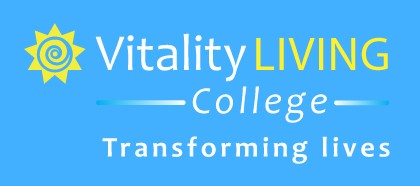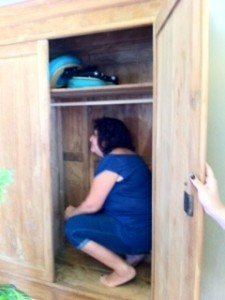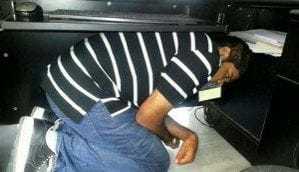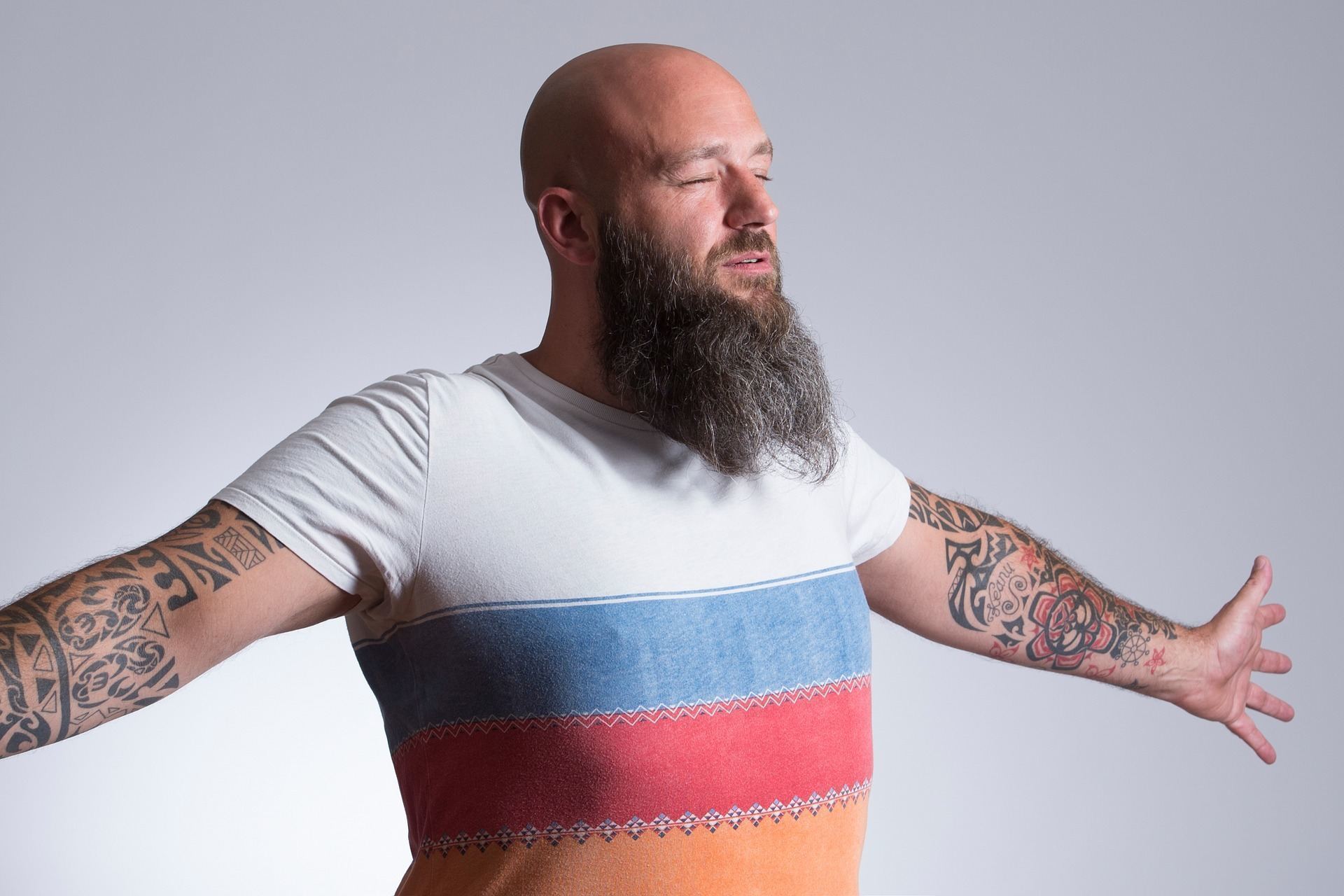What Are Common Fears And Phobias? How To Use EFT Tapping For Fear And Phobia Relief?
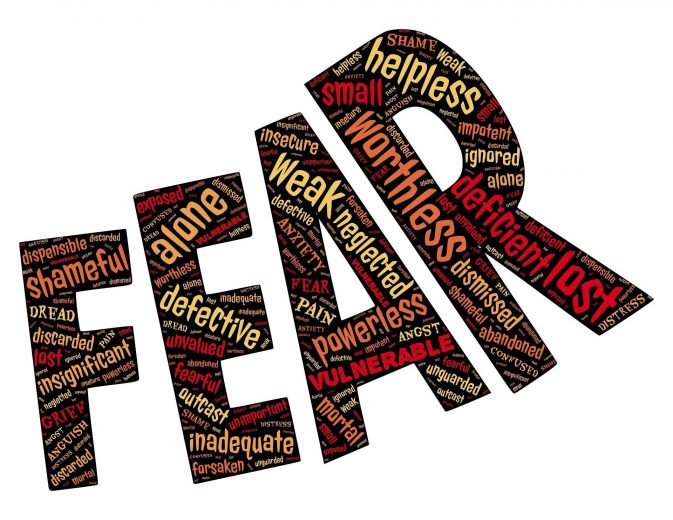
Does EFT tapping for fear And phobia work?
In this article, you will learn about what phobias and common fears are, and how to overcome them with the help of EFT Tapping Therapy.
The EFT Tapping for Fear and Phobia has proven to be an effective alternative therapy to help individuals cope with their fears, and heal the root cause.
I still remember that day, it was raining heavily and the chilly wind was the highlight. Everything was so breezy, and out of nowhere, this lizard came in front of my eyes.
I was petrified. I was so scared that I screamed, and I was scared all day.
Since childhood, I’ve been terrified of lizards; heard a lot of daunting stories about them. So, I opted for the EFT Practitioner Course, and on one particular day, the topic being discussed was fears and phobias.
While working upon the root cause of my fear of lizards, I opened up about many stories I had heard in childhood.
A story of a mother feeding milk to her son, which a lizard fell into. The son died after consuming the milk, and I think this was the scariest of all stories. Also, the texture of the lizard kind of freaked me out.
This was the reason I was so scared of lizards. But after using EFT, my fear was in control.
What are you most afraid of? Maybe your phobia is of needles, blood, heights or even dentists (another of mine).
Perhaps just the thought of driving, being in a crowded elevator or flying makes your heart beat fast and palms sweaty.
Fears and phobias are more common than you might realise.
I was surprised to learn that according to the Institute of Mental Health (April 2015), the fear of public speaking is the number one fear in the world, beating the fear of death and spiders.
People would rather die than speak in public! It is so scary, for so many people, including me. Other examples of common fears include the fears of darkness, thunder, and confined spaces.
What exactly defines a fear AND phobia?
Fear is when we are scared of something, and a phobia is an illogical fear. The difference between fear and a phobia lies in the normality of fear, versus the abnormal features of a phobia.
When it comes to tiny children, the line between fear and phobia can be blurry. Childhood fears are a natural aspect of growing up.
Normal childhood fears, unlike phobias, entail a normal fear reaction, have a minor impact on daily function, and go away as the kid grows older.
Fears and phobias are frequently distinguished by psychologists. Fear is an emotional reaction to a perceived or real threat.
Fears are frequent in the population, and they are often normal – or at the very least harmless – reactions to items or occurrences.
Many people, for example, are afraid of spiders and have a mild to moderate anxiety reaction when they see one.
A phobia is comparable to fear, with the exception that the anxiety they feel is so severe that it affects their quality of life and/or capacity to operate.
While many people are afraid of spiders, only a small percentage of the population is considered to have a spider phobia.
People with arachnophobia (the fear of spiders) often spend a lot of time thinking about spiders, and they spend a lot of time making sure they don't come into contact with one.
They will avoid certain areas and activities to prevent contact with spiders.
I recall my university friend Becky, who had a fear of sharks. If she ever came across a picture of a shark in a magazine, she used to scream out loud and immediately throw the magazine out of her hands, as if the shark was right in front of her.
This is what makes the phobia illogical. The shark is not in front of her and yet her experience is as if the shark is in front of her.
She is not even in the sea, and yet she feels as though the shark is right next to her.
It's helpful to distinguish between a fear and a phobia because they're qualitatively different concerns. (2)
HOW DOES FEAR AFFECT US?
Fear is the primary emotion evoked by concrete threats in people’s environment. The thought of a fast-approaching car, a spider crawling on one’s arm, or the possibility of being robbed can all evoke fear in a person.
Fear is characterized by its orientation to the future: the emotion is always about things that have not happened yet, but might.
There are many types of threats that evoke fear. Some of them are:
- Fear of getting hurt
- Financial or material loss
- Making a faux-pas
- Losing a friendship
- Hurting others
- Fear of getting embarrassed
- Feeling lonely
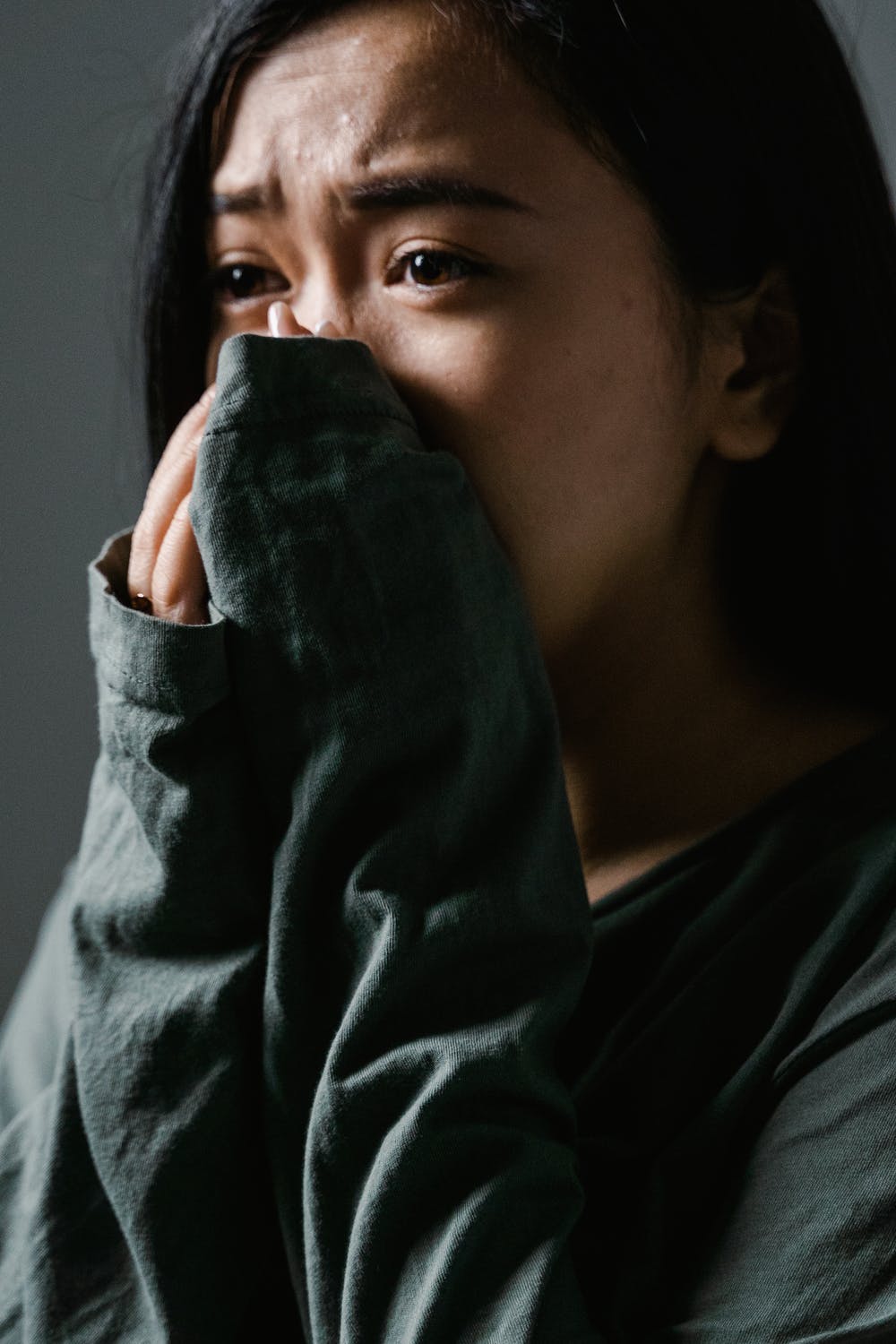
Fear is a vulnerable emotion, and is often masked by other behaviors. Fear shows up in many forms as a means to avoid the actual emotion. Some of these avoidance mechanisms are:
- Not living up to your full potential
- Not achieving your dreams
- Feeling stuck, or being unable to take action
- Over-thinking or over-analysis
- Procrastination
- Low self-esteem
- Indulging in narcotics or other unhealthy addictions, or sleeping excessively as avoidance
Fear not only has effects on our mind, but on our body as well. Fear activates our nervous system, and leads to anxiety. Anxiety is a coping mechanism for stress. When our nervous system gets affected by anxiety, our body goes into a survival mode and impairs the functioning of all the systems in the body.
Fear often involves both physical and emotional symptoms. Each person may experience fear differently, but some of the common signs and symptoms include:
- Chest pain
- Chills
- Dry mouth
- Nausea
- Rapid heartbeat
- Shortness of breath
- Sweating
- Trembling
- Upset stomach
In addition to the physical symptoms of fear, people may experience psychological symptoms of being overwhelmed, upset, feeling out of control, or a sense of impending death.
TYPES OF PHOBIAS
Phobias occur in a variety of sizes and shapes. The list of specific phobias is quite long due to the endless number of items and situations.
Not everyone is terrified of the same thing, person, location, or scenario. Unlike those with anxiety disorders, who feel apprehensive, irrespective of the reason, phobias are frequently linked to a specific source.
Psychiatrists classify phobias into four categories based on the source or scenario that may cause a worried feeling or reaction:
1.
Social Phobia
As the name implies, social phobia is a fear that only affects people in social situations.
When people are terrified of being singled out in social situations or of being judged by others for having different beliefs than the others around them, they are labelled with this type of phobia.
This type of fear, which is frequently misinterpreted as shyness, has a more horrifying aspect because fear of embarrassment can lead to low self-esteem.
Such people avoid social gatherings because they are uncomfortable talking to new people.
2.
Agoraphobia
Agoraphobics' conduct is defined by their fear of becoming trapped or unable to escape.
When caught in an elevator or forced to leave the comfort and security of their homes, people exhibit tremendous anxiety and are more prone to panic attacks.
This is a fairly prevalent phobia that is sometimes misinterpreted as a fear of open spaces, despite the fact that the same persons may experience identical degrees of anxiety when confined to a tiny, limited place, such as an elevator or while utilising public transportation.
3.
Specific Phobias
The most fascinating feature is that persons who suffer from this type of phobia are aware that their fear is irrational, but they are unable to control their anxiety when thinking about being trapped in that circumstance.
Unfounded fears of particular animals and insects, blood-injection-injury type of fear of seeing blood or undergoing blood tests, driving a car, fear of heights, and travelling through tunnels or on bridges are all common examples.
These kinds of scared inclinations usually start in youth and can last throughout adulthood.
4.
Common Phobias
- Acrophobia – the fear of heights
- Aerophobia – the fear of flying
- Arachnophobia – the fear of spiders
- Astraphobia – the fear of lightning and thunder
- Autophobia – the fear of being alone
- Hydrophobia – the fear of water (1)
CAUSES AND COMPLICATIONS OF PHOBIA
Causes of phobia may include:
1. Negative experiences - Many phobias arise as a result of a bad experience or panic attack involving a specific object or situation.
2. Genetics and environment - There could be a link between your phobia and your parents' phobia or anxiety, which could be attributable to heredity or learned behaviour.
3. Brain function - Changes in brain function may also contribute to the development of specific phobias.
Specific phobias, while amusing to others, can be disastrous to those who suffer from them, causing issues in many areas of life, like the following:
1. Social isolation - Avoiding places and things you are afraid of might lead to academic, professional, and personal issues.
Academic challenges and loneliness are common among children with these disorders, and they may struggle with social skills if their actions differ greatly from their peers.
2. Anxiety disorders - Many individuals who suffer from specific phobias often suffer from depression and other anxiety disorders.
3. Substance abuse - Living with a severe particular phobia can cause stress, which might lead to drug or alcohol dependence.
4. Suicide - Some people who suffer from specific phobias may be in danger of committing suicide. (2)

“Just because you have a fear or a phobia does not mean you have to live with it.”
Dr. Rangana Rupavi Choudhuri (PhD)
What if you could let go of all that fear that is holding you back from doing the things that you love? The first step is to accept that you are going through something and you need help.
Once you realise you require professional help, go for it. After all, overcoming a phobia is only going to improve your lifestyle and will help you maximise your mental health.
Eliminating even the scariest of phobias is now possible through EFT(Emotional Freedom Techniques). EFT gets to the root cause of the fear or what is holding you back and eliminates it from there.
For those new to EFT, it is also known as Tapping Therapy, which combines tapping on acupressure points while saying statements out loud to accept situations.
If you would like to experience the power of EFT first hand just download the EFT Booklet below:
EFT TAPPING FOR PHOBIAS
EFT Tapping for Phobias is an alternative therapeutic method which has proven to be long-lasting and effective.
The sample procedure of EFT Tapping for phobias is as follows:
Step 1:
Take A Quick Temperature Check
Identify and explore more about what triggers your phobia, by asking the following questions:
- What or who is it that makes you afraid?
- What triggers the phobia?
- What has to happen for you to feel better?
Step 2:
Identify The Physical Sensations
Identify physical sensations that are associated with the phobia. You can explore by asking questions such as:
- How are you feeling?
- Where in the body are you experiencing this feeling?
- What is the colour, texture, size, and shape of the phobia?
Measure the level of the phobia by asking: "On a scale of 1 to 10, what number is the phobia at, where 10 is high and 1 is not high at all."
Step 3:
Start Tapping On The Side Of Your Hand (Karate Chop)
Tap on The Karate Chop using the setup statement, for example:
“Even though I have the phobia of heights and I can feel it in my stomach, it’s at a number 8, blue in colour, and it makes me feel suffocated, I deeply and completely love and accept myself.” (Repeat 3 times)
Step 4:
Then Tap On The Facial And Upper Body EFT Tapping Points
Use the identified phrases to tap on the facial, upper body, and finger EFT Tapping Points:
- Eyebrow: I fear about …..
- Temple: I feel it in my …..
- Under eye: It’s at a number …..
- Under nose: It makes me feel …..
- Chin: It’s in my ….. at a number …..
- Collarbone: It makes me feel …..
- Under the arm: So …..
- Thumb: So …..
- Index Finger: Feared because …..
- Middle Finger: I feel it in my …..
- Little finger: So …..
Step 5:
Close The Sequence By Tapping On The Side Of Your Hand Again
Close the sequence by coming back to the EFT Karate Chop Tapping Points and repeating the setup statement once:
“Even though I have a phobia of heights and I can feel it in my stomach, it’s at a number 8, blue in colour, and it makes me feel suffocated, I deeply and completely love and accept myself.”
Step 6:
Breathe And Relax
Take a gentle breath in and out, and have a sip of water.
Step 7:
Test Yourself
Test the intensity of the phobia. Ask yourself the following questions:
- What number is the phobia at now?
- What changed after you did the tapping?
- How does it make you feel now?
If the fear has reduced to a level that you’re happy about, you can stop and close with positive tapping. If you feel it's the same or worse than before, explore and clear the memories.
Once fear takes hold of you, it can cripple you from taking action.
Just imagine your dream was to become a leader or someone in an upper management position in your organisation, and it was a requirement for you to hold constant meetings and even speeches. However, you have a fear of speaking in front of a crowd or a gathering.
Pop! There goes your dream. Just because you let your fear take over you.
It does not allow you to move forward and take action to achieve your goals and dreams.
does eft tapping work for fear and phobias?
Clinical studies show that Fear of Public Speaking is rated highest among people (3).
"Glossophobia, or a fear of public speaking, is a very common phobia and one that is believed to affect up to 75% of the population. Some individuals may feel a slight nervousness at the very thought of public speaking, while others experience full-on panic and fear."
Clinical studies showing improvement in spider phobic patients (4).
It was aimed at investigating predictors of treatment success, attrition and the extent of treatment needed to achieve clinically significant improvement in spider phobic patients.
A total of 103 patients were included in the study after a detailed screening interview. There were four treatment conditions; self-help manual, video, group, and individual treatment, which the patients received in a hierarchical order providing they were not clinically significantly improved after the previous treatment.
Pre and post each treatment the patients went through a behavioural approach test and filled in a number of self-report questionnaires. The results showed that 38 patients dropped out during the manual treatment, and 59 fulfilled the treatments to become clinically improved.
The patients achieving clinical improvement after the two self-help treatments were significantly predicted, as was the extent of treatment needed. The significant predictors were the credibility of the manual treatment and motivation for psychotherapy in general.
There are hundreds of stories showing how after attending the EFT Training, fear was eliminated. Some of these liberating stories are given below.
So, what is holding you back from living your life?
Fears and phobias are common among people, but they shouldn't prevent you from experiencing a full life.
Love,
Dr Rangana Rupavi Choudhuri (PhD)
In summary, while it seems scary to tackle a phobia, it can be a very liberating experience once it no longer controls your life. You can overcome it by practising yoga and/or meditation or even use a clinically proven method. With EFT, you can finally face and release your fear, and once and for all take back your power. Take your time and do what you feel is right for you, as and when you feel comfortable.
References:
1. https://www.cadabamshospitals.com/common-types-phobias/
2. https://www.healthline.com/health/phobia-simple-specific
3. Psycom - Glossophobia (Fear of Public Speaking): Are you Glossophobic?
4. https://www.huffingtonpost.ca/roger-covin/phobia-and-fear_b_1596640.html
Disclaimer: The information on this website is purely for educational purposes and does not in any way replace the requirement for medical and psychological diagnosis and treatment. Please do seek professional medical and psychological diagnosis and advice for all medical and mental health conditions. It is advised to always book any consultations with qualified professionals.
Learn Emotional Freedom Techniques for self-healing or to become professionally qualified - More
Our other seminars:
For the full calendar of events.
